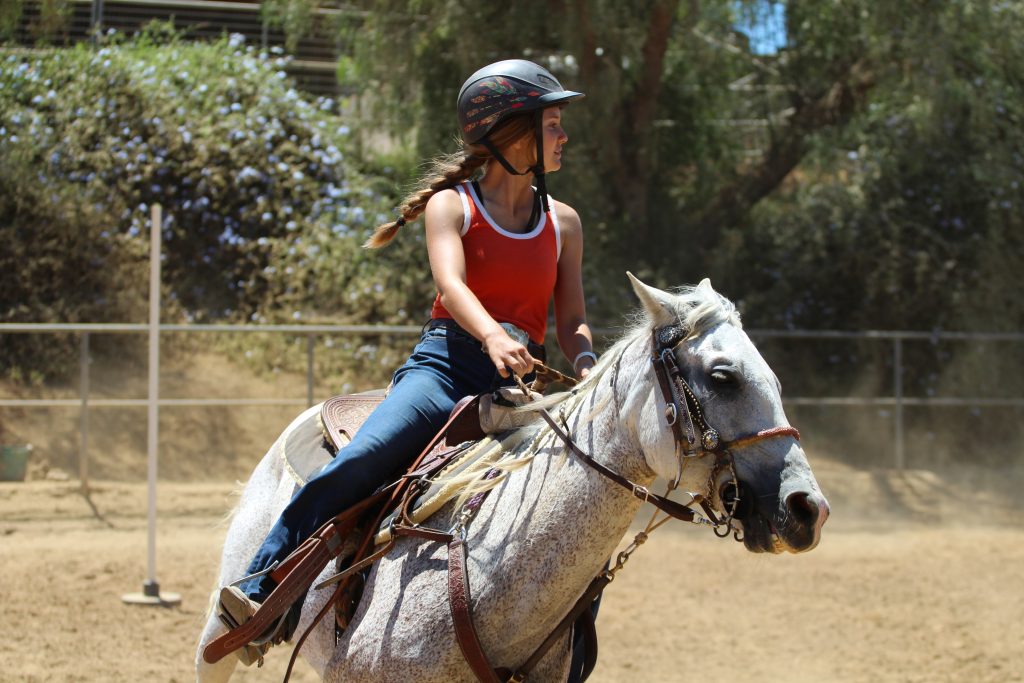Head injuries are a significant concern in the equestrian world, often leading to hospitalization or worse, fatalities. Disturbing statistics emphasize the high incidence of horse-related accidents resulting in traumatic brain injuries. Helmets have been proven to reduce the risk of traumatic brain injury by as much as 50 percent, yet many riders continue to disregard their use.
Tragic Incidents: The Consequences of Not Wearing a Helmet
In 2010, Olympic dressage rider Courtney King-Dye suffered a fractured skull and fell into a coma after a horse-related accident in which she wasn’t wearing a helmet. In another tragic incident, a rider in Washington State fell off her horse and died due to head trauma because she didn’t wear a helmet. The stories continue, with riders like Patricia Moore, Elizabeth Hader, and Lara Dewees suffering fatal head injuries.
Horses Are Unpredictable
Horses are powerful animals that can have unpredictable reactions. Contrary to common beliefs, no horse is entirely bombproof, and even the most well-behaved horses can spook, trip, or stumble, leading to dangerous situations for riders.
Understanding The Impact of Head Injuries
Head injuries are the most frequent reason for hospitalization or death among equestrians. A mere two-foot fall can cause permanent brain damage. Horses can raise a rider’s head up to more than eight feet from the ground. When galloping at speeds of up to 60 kilometers per hour, a rider’s skull can shatter on impact. Furthermore, riders who have already experienced one head injury have a 40 percent chance of suffering a second one, which can be especially fatal for children, teens, and young adults.
Survivors of traumatic brain injuries may face life with serious impairments, such as:
- epilepsy
- cognitive impairment
- speech difficulties
- emotional and personality changes
- depression, and post-traumatic stress disorder.
Thus, head injuries are life-altering events that riders should take seriously.
The Role of Helmets in Preventing Traumatic Brain Injuries
Research shows that as helmet usage increases, fewer riders suffer severe head injuries. When the United States Pony Club implemented stricter helmet regulations, concussions were reduced by 29%, and head injuries decreased by 26%. Despite this, rates of helmet use among equestrians remain surprisingly low, with percentages as low as 25%.
Compared to other sports, equestrian activities have a higher incidence of traumatic brain injuries. In one study, equestrian sports accounted for over 50% of all traumatic brain injuries in adults over 40, surpassing the rates in football, rugby, skiing, and motorcycling. This is concerning, considering that while motorcycle riders experience serious injuries every 7,000 hours of riding, equestrians experience one every 350 hours.
Safety First: The Essential Gear for Rider Protection
To minimize the risk of head injuries and ensure safety while riding, riders must prioritize safety gear and follow essential precautions. Wearing a certified helmet is the most crucial step, as it can significantly reduce the severity of head injuries in case of a fall. Additionally, protective airbag vests can safeguard vital organs and soft tissues during accidents. Boots, chaps, gloves, and reflective gear for both the rider and horse are essential components of safe riding equipment.
While the thrill of horseback riding and the allure of the backcountry are undeniable. However, riders must stay cautious, be prepared, and prioritize safety. By adhering to safety measures and investing in protective gear, riders can greatly reduce the risk of accidents and enjoy their equestrian pursuits with peace of mind.

